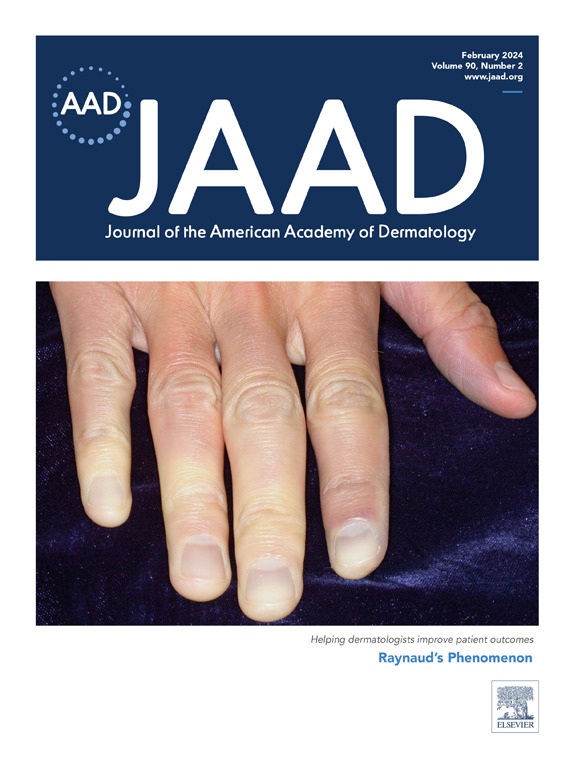与脱发有关的乳糜泻:多中心病例对照研究
IF 12.8
1区 医学
Q1 DERMATOLOGY
引用次数: 0
摘要
背景:乳糜泻(CD)是一种由摄入麸质引发的自身免疫性疾病,会导致炎症和小肠损伤。CD 与各种皮肤疾病(如疱疹性皮炎)广泛相关,但 Dev 等人1 一项有 300 人参加的横断面研究假设,CD 还可能与脱发症(AA)相关:本病例对照研究旨在调查乳糜泻与初步诊断后的脱发患病率之间的潜在关联:我们的病例对照研究利用 TriNetX 确定了 509,910 名乳糜泻患者,并将他们与 622,747 名对照者进行了比较,以衡量脱发风险结果的差异:我们的分析表明,与对照组(N=495,112)相比,乳糜泻患者(N=495,211)罹患脱发症的风险较高,几率比为1.25(1.129-1.385),p局限性较大:本研究的局限性包括:分析对象为美国人口、病历中可能存在的错误、误诊以及由于TriNetX利用人工智能搜索患者数据而导致ICD代码错误存入病历:本研究利用了大量样本,证实了之前提出但未得到充分证实的关联性。即使大型自动编译数据库可能存在固有的错误,但发现的令人信服的关联程度肯定了长期以来怀疑的 CD 与 AA 风险增加之间的关联。本文章由计算机程序翻译,如有差异,请以英文原文为准。
Celiac disease associated with alopecia areata: A multicenter case-control study
求助全文
通过发布文献求助,成功后即可免费获取论文全文。
去求助
来源期刊
CiteScore
8.60
自引率
5.80%
发文量
2023
审稿时长
49 days
期刊介绍:
The Journal of the American Academy of Dermatology (JAAD) is the official scientific publication of the American Academy of Dermatology (AAD). Its primary goal is to cater to the educational requirements of the dermatology community. Being the top journal in the field, JAAD publishes original articles that have undergone peer review. These articles primarily focus on clinical, investigative, and population-based studies related to dermatology. Another key area of emphasis is research on healthcare delivery and quality of care. JAAD also highlights high-quality, cost-effective, and innovative treatments within the field. In addition to this, the journal covers new diagnostic techniques and various other topics relevant to the prevention, diagnosis, and treatment of skin, hair, and nail disorders.

 求助内容:
求助内容: 应助结果提醒方式:
应助结果提醒方式:


